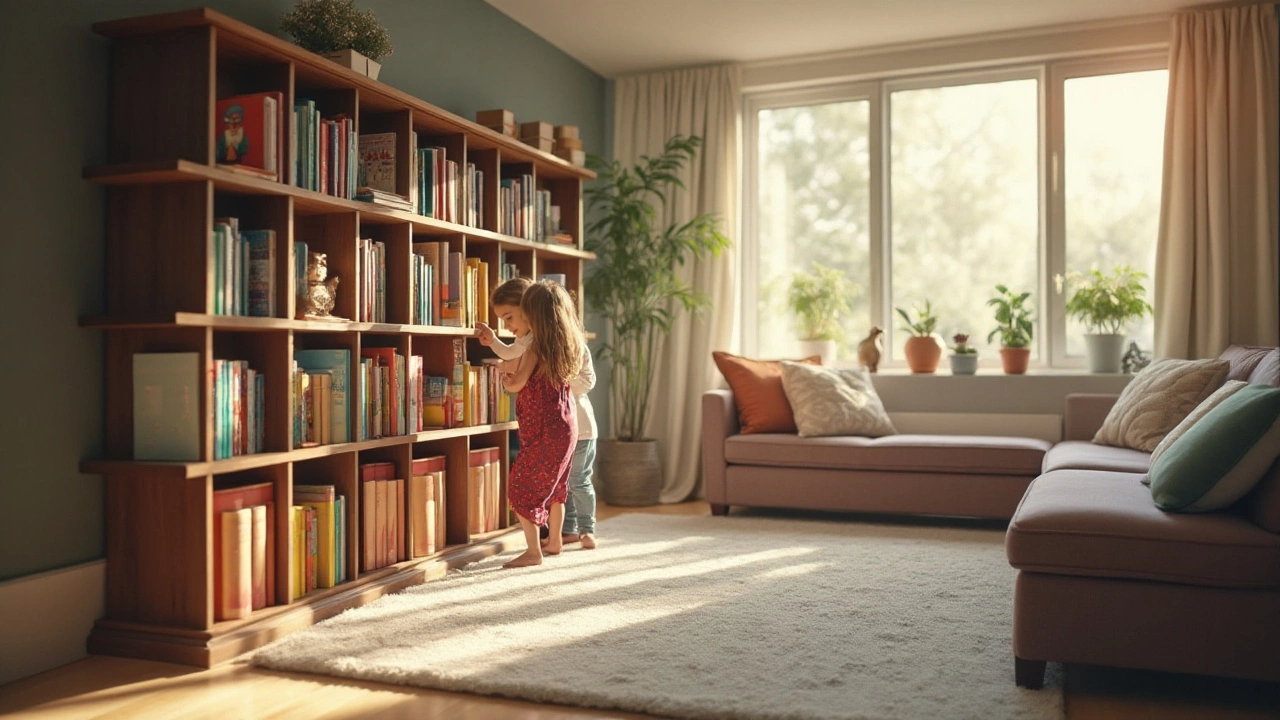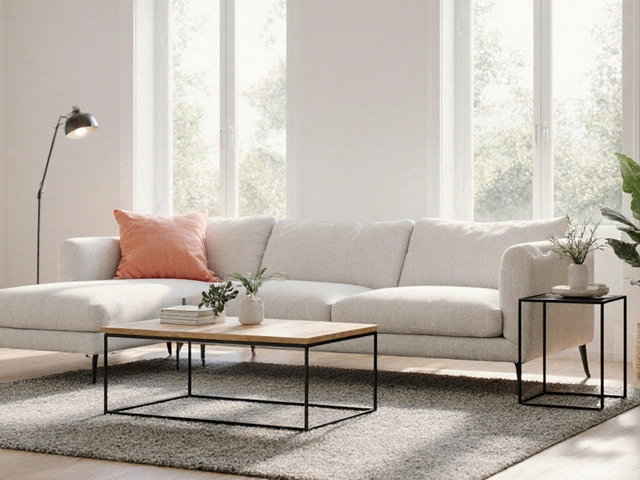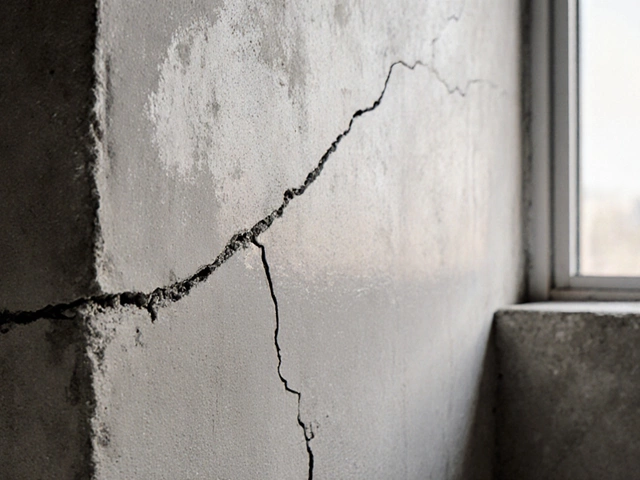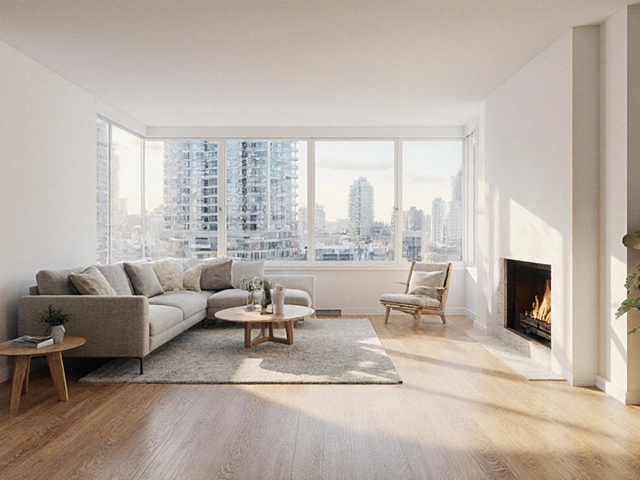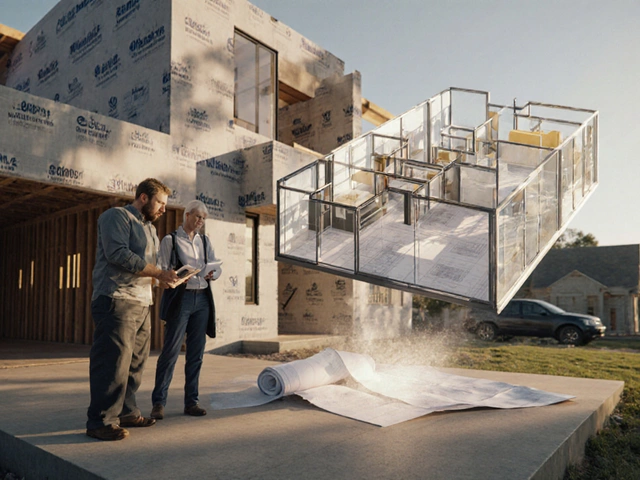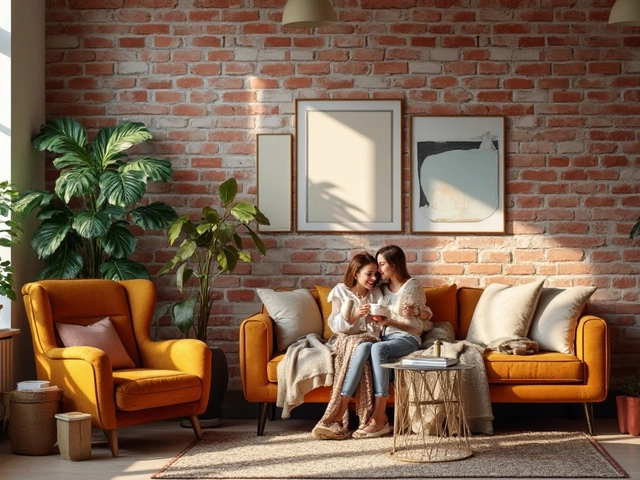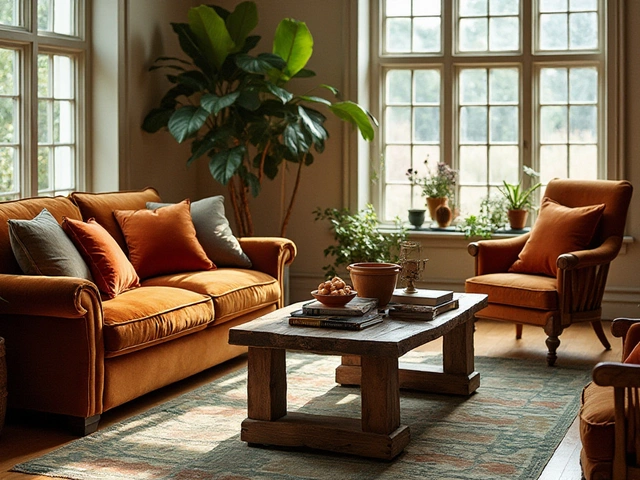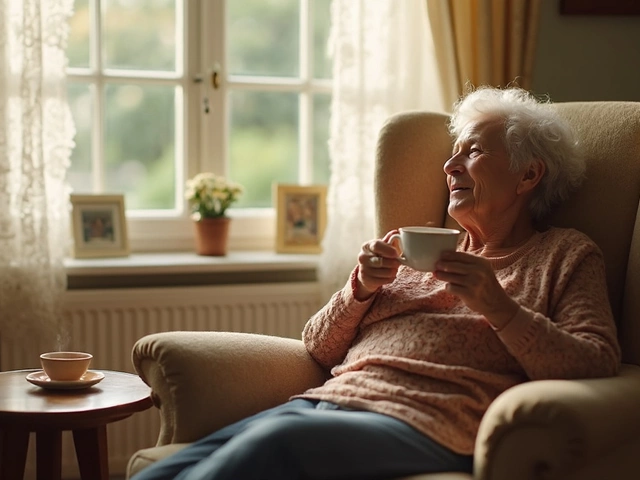Securing a bookcase may not top everyone's list of priorities, but it's important for both safety and peace of mind. The right anchor can make all the difference, keeping your bookcase steady and your belongings secure. This guide dives into various materials and methods available to anchor your bookcase, helping you make informed choices that suit your home's design and your personal needs.
We'll explore why your wall's material affects your anchor choice, and offer practical advice on selection and installation. These simple yet crucial steps can prevent potential hazards, especially in homes bustling with children or pets. Stay tuned for insights that blend functionality with aesthetics, promising both a safe and elegant living environment.
- Importance of Anchoring Bookcases
- Types of Anchors for Bookcases
- Choosing the Right Anchor for Your Wall Type
- Installation Tips and Tricks
- Safety Considerations in Households with Children
- Maintaining Your Bookcase Stability
Importance of Anchoring Bookcases
You might wonder why such a sturdy piece of furniture even needs an anchor at all. But the reality is that a seemingly stable bookcase can become a terrifying hazard if not properly secured. Picture a playful child tugging on a lower shelf, or just the natural wear and tear from heavy books tilting the balance over time. The weight distribution of a bookcase that isn’t firmly affixed to the wall can lead to disastrous tumbles.
This risk becomes even more apparent when you consider that many incidents occur in homes without proper safety measures. An unsettling report from Health Canada highlighted that tipping furniture can cause significant injuries, especially in young children. Major global awareness campaigns have driven home the point: preventing tip-over accidents saves lives. Such powerful messages underline the necessity of taking proactive steps to secure your beloved shelves in place.
Anchoring is essential not only for your peace of mind but for the aesthetic longevity of your space. A tip-over risk isn't just harmful — it’s an unwelcome disruption to the carefully curated look of your room. Nobody wants to deal with the stress of broken items or, worse, injured loved ones. With modern anchors being as discreet as they are effective, locking your bookcase in place doesn’t mean compromising style for safety.
Imagine a Safer Space
Consider the multi-layered protection anchoring offers—it’s like putting the most dependable seatbelt on your home furnishings. This act is a simple yet vital task. Inevitably, things get chaotic; whether during lively gatherings or everyday life, accidents can happen. But a strong set of anchors allows you to mitigate these risks significantly. Many dangerously underestimate how much safety comes from such simple measures. To illustrate, a study noted that nearly 70% of homeowners have admitted to overlooking simple anchoring in favor of aesthetics, yet safety groups consistently stress its pressing need.
As the National Safety Council wisely notes, “Taking the time to properly secure your furnishings shows a sense of responsibility and care for household safety. It's a small effort with potentially huge benefits.”
These anchors not only help in preventing tip-overs but can also keep your furnishings from being damaged during minor earthquakes, a consideration particularly relevant here on the west coast with our risk of seismic activities. In fact, anchoring furniture is a recommended step in earthquake preparedness guides. It's a dual-purpose solution: ensuring stability during normal use and providing peace of mind when unexpected shakes occur.
In a world where we can’t predict every outside force at play, within the walls of your home, you have the opportunity to create a robust and protected environment. Consider it a vital task in safeguarding those you hold dear and preserving the sanctity of your personal space. Whether you're renting a cozy apartment in Vancouver or settling down in a family home, make anchoring a part of your furniture setup ritual—it’s a small investment for your peace of mind and the wellbeing of those you love.
Types of Anchors for Bookcases
Whether you're an avid reader with a penchant for collecting books or someone who simply loves the aesthetics of a well-crafted bookcase, ensuring its stability through the right anchors is paramount. Bookcase anchors come in various forms, each designed to cater to different wall types and load capacities. Probably the most common and versatile option is the toggle bolt. These are especially useful in drywall situations due to their ability to expand behind the wall, providing a firm hold. Toggle bolts often come in metal varieties, offering substantial support and stability.
Another popular choice is the molly bolt, which shines in situations where hollow walls are a challenge. Once installed, the molly bolt spreads out its 'legs,' securing it in place much like a toggle bolt. They are ideal for medium-weight applications. For those who are dealing with solid walls like concrete or brick, sleeve anchors can come in handy. Sleeve anchors provide a robust hold, ideal for heavy furniture or where stability is non-negotiable.
Understanding Plastic Wall Anchors
Plastic wall anchors, often referred to as expansion anchors, are another option for lighter loads and are used primarily on drywall or plaster. Though they might not hold as much weight as their metal counterparts, they are easy to install and are widely available. The way they work is by allowing a screw to expand the plastic sleeve as it is tightened, resulting in a snug fit within the wall. Such anchors are suitable for smaller bookcases or shelves that don't bear exceedingly heavy items.
Adhesive or no-drill anchors have been gaining popularity in recent years, particularly for renters or those who prefer not to make permanent changes to their walls. These solutions use high-strength adhesives to hold the bookcase in place, providing convenience and ease of installation. However, they may not offer the durability that mechanical anchors do, and their effectiveness can diminish over time or with extreme temperature variations. Always check product specifications to ensure they can handle the safety requirements of your specific furniture piece.
"The type of anchor you select can make a significant difference in the way your bookcase withstands the test of time," says Charles H. Biffle, an interior design expert and author of 'Design Within Reach'.
It's worth considering these factors when deciding which anchor to use: the weight of your bookcase, the type of wall you're working with, and if future removal with minimal damage is a priority. In select cases, a combination of different anchor types may be necessary, especially if dealing with an eclectic mix of wall constructions. Take time to assess your unique situation thoroughly before making a decision, and don't hesitate to seek advice from materials or construction specialists.
Weight Considerations and Safety
When contemplating the load-bearing capabilities of various anchors, it's fascinating to note how engineering has made it possible to hang heavy shelves on otherwise flimsy drywall. A table that outlines recommended anchor types based on their weight ratings might be helpful:
| Anchor Type | Weight Capacity |
|---|---|
| Toggle Bolt | 50-100 lbs |
| Molly Bolt | 25-50 lbs |
| Sleeve Anchor | 100+ lbs |
| Plastic Wall Anchor | 10-15 lbs |
| Adhesive Anchor | Varies (check product) |
This data can serve as a rough guide when selecting the right anchor for your bookcase. The key is always to ensure safety and stability, making the safety of your family and the longevity of your bookcases a top priority. With the range of anchors available today, securing heavy loads has become nearly as effortless as placing the books on the shelves themselves.
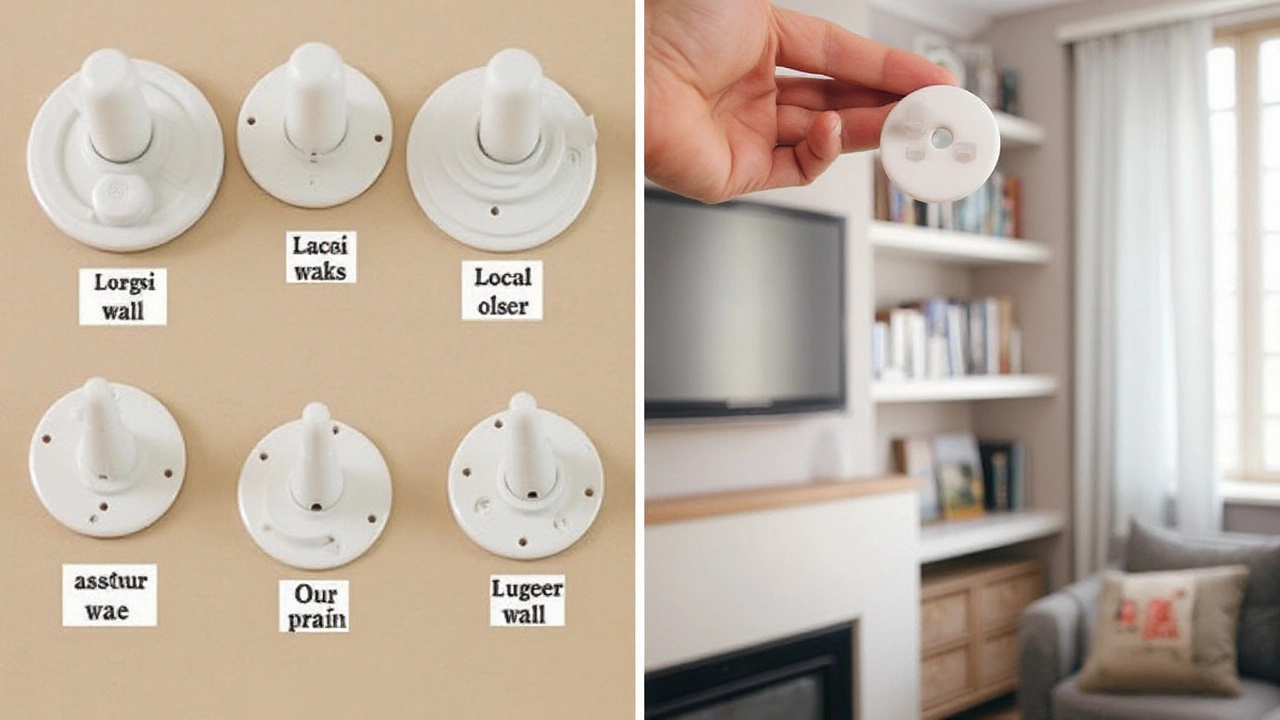
Choosing the Right Anchor for Your Wall Type
When it comes to securing your beloved bookcase, the type of wall it's attached to plays a crucial role in the decision-making process. Not all walls are created equal, and understanding the material your wall is made of can save you time, effort, and potentially prevent disaster. If you've ever had the misfortune of seeing a bookcase tip over or a heavy shelf pull straight out of the wall, you know the importance of choosing the right anchor. Let's dive into this critical topic by considering three common wall types: drywall, plaster, and concrete. Whether you're dealing with classic drywalls or something more solid like concrete, there's an anchor designed for the task.
Anchors for Drywall
The most common wall in modern homes is drywall, and while it's easy to work with, it’s not the strongest surface for heavy loads without the proper support. When mounting a bookcase on drywall, you typically want to use anchors such as toggle bolts or molly bolts, which expand behind the wall to distribute weight more evenly. These anchors are especially beneficial when you can't line up with a stud. Toggle bolts, with their expandable wings, can handle more weight and are generally recommended for heavier pieces. According to Bob Vila, a home improvement expert, "A well-installed toggle bolt can bear weight upwards of 50 pounds, making it an excellent choice for anchoring furniture in drywall."If you're looking to position your bookshelf where a stud is located, a simpler option, such as a plastic expansion anchor, can often suffice for lighter loads. However, always ensure you're using screws of adequate length that can reach and secure into the stud itself.
Anchors for Plaster Walls
Plaster walls offer a different set of challenges and were commonly used in homes built before the 1950s. They are more fragile than drywall, often requiring careful handling. For these walls, the best strategy often involves using plastic wall anchors specifically designed for plaster or even toggle bolts for heavier furniture like bookcases. It is critical to drill a pilot hole before inserting the anchor to avoid cracking the plaster, ensuring a snug fit. For very heavy pieces, screwing directly into the wooden lath behind the plaster provides the strongest hold.Anchors for Concrete or Brick Walls
Concrete and brick are among the sturdiest surfaces for securing heavy furniture but require specialized anchors. Sleeve anchors and wedge anchors are your go-to options here, designed to expand and firmly grip the dense materials. Using a powerful drill with a masonry bit is necessary to make the initial holes. Precision is key with these dense wall types, and proper placement reduces the risk of surface damage. A pilot hole that's too big or too small can ruin the setup entirely.Here's a quick look at some popular anchor options and their weight-bearing capacities:
| Anchor Type | Wall Type | Weight Capacity |
|---|---|---|
| Toggle Bolt | Drywall | Up to 50 lbs |
| Molly Bolt | Drywall/Plaster | 25-50 lbs |
| Sleeve Anchor | Concrete/Brick | Up to 200 lbs |
Choosing the right anchor isn’t just about safety; it’s about preserving the aesthetic and integrity of your living space. It might be tempting to use whatever supplies are at hand, but investing in the correct type of anchor for your wall can prevent costly accidents and ensure your bookcase remains a sturdy focal point in your room. Don't underestimate the value of materials knowledge—it’s the first step toward a secure and stylish setup.
Installation Tips and Tricks
Getting your bookcase securely anchored is not just about safety; it’s about peace of mind. Whether you're living in a bustling household with children darting around or a cozy apartment filled with cherished books and collectables, the right installation of anchors is crucial. The first step in this process is determining the type of wall you're working with, as different materials require different approaches for anchoring to be effective. For instance, drywall often needs anchors that expand, while brick or concrete demands more robust solutions like masonry screws. A bookcase anchored to a wall improperly can tip over, endangering anyone nearby and damaging your treasured items.
Before diving into the installation, gather all necessary tools and supplies. A reliable stud finder is invaluable when dealing with wooden walls. It helps locate the studs behind drywall, the strongest points for securing a bookcase. If no studs are available in the desired location, consider using toggle bolts, designed to hold heavy loads by expanding behind the wall. A power drill with various bit sizes is essential, and don’t forget the screwdriver, level, and measuring tape. Remember, patience is key here; rushing the installation could compromise the stability of your furniture.
After gathering tools, start by measuring precisely where you'll drill. Use a pencil to mark the spots after leveling your bookcase. Mismatched heights can lead to a biased, uneven setup which might not just look awkward but also unsteady. Drilling is a meticulous task; ensure bits are the correct size for the anchors you’re using. Once you've drilled, insert the anchors following their instructions, as designs can vary significantly. For newer installations, you might find some quick-mount systems with built-in levelers incredibly handy, reducing setup time remarkably.
"Safety in the household begins with secure furniture, especially in high-footfall areas," says interior design expert John Wood.
Post-installation, give your bookcase a firm tug to ensure it's seated securely. It shouldn’t budge or rattle. If it does, reconsider the anchoring points or seek specialized anchors that better suit your wall type or bookcase design. For those living in earthquake-prone areas, additional considerations such as L-brackets or even earthquake straps might be necessary. These offer extra security by attaching the top of the bookcase to the wall, preventing any potentially hazardous swaying or tipping.
Finally, a brief maintenance check every few months will help keep your installation safe and sound. Look out for minor issues like loose screws or any wear on the anchors and address them promptly. Such upkeep will prolong the life of your furniture setup and ensure it remains a secure, stylish focal point in your home.
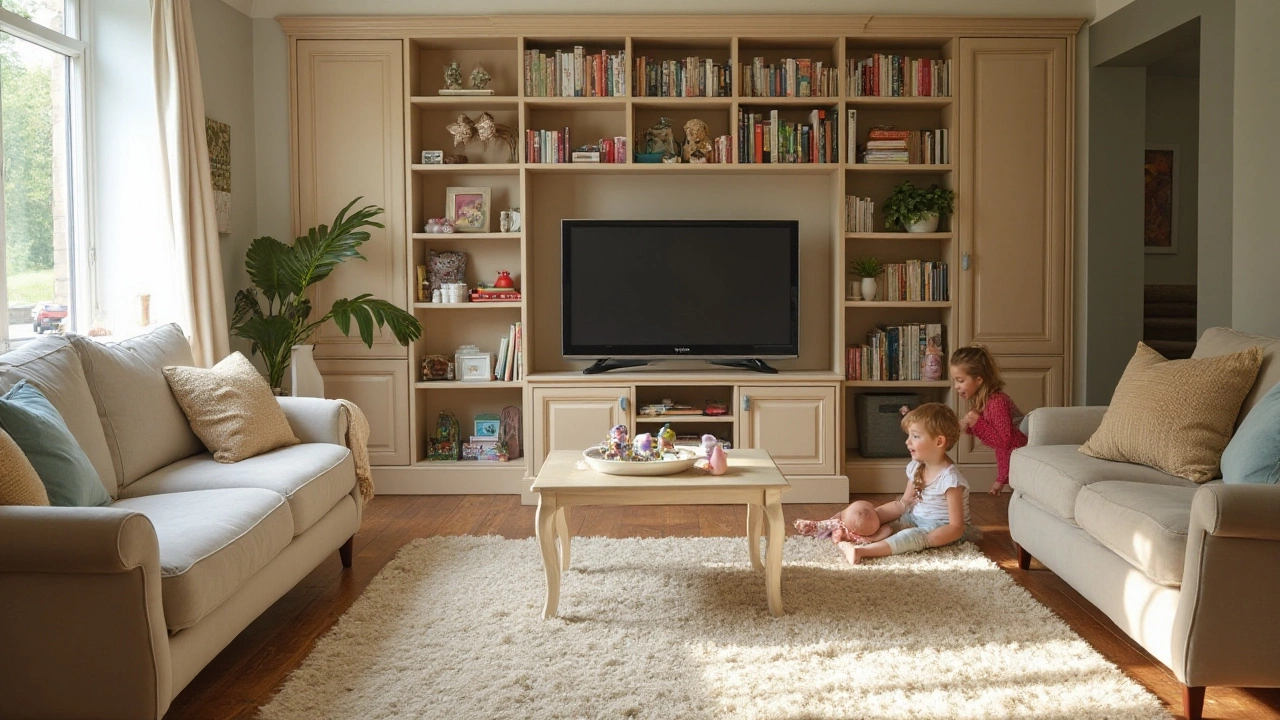
Safety Considerations in Households with Children
When you have little ones running around, safety becomes the top priority in home design, and your beloved bookcase can be the source of concern if not properly anchored. Children are naturally curious, often seeing these towering structures as perfect climbing apparatuses. Without proper anchoring, there's a real risk of toppling, which can lead to serious injuries. Reports from the Consumer Product Safety Commission indicate that thousands of children are injured each year in tip-over accidents involving heavy furniture like bookcases.
Anchoring your bookcase is not just about safety; it’s about peace of mind. The industry offers a variety of anchors designed to meet different needs, whether it's a heavy-duty solution for substantial furniture or more discreet options that blend seamlessly with decor. When choosing an anchor, consider the dynamics of your household, such as the age and adventure tendencies of your children. Not all anchors provide the same level of security, and some require specific installation techniques based on the weight and height of your bookcase.
Tips for Safe Bookcase Placement
Strategically positioning your bookcase can complement the security that correct anchoring provides. Place larger items on lower shelves, which can help bring down the center of gravity. This method can reduce the likelihood of a tip-over should a child attempt to climb. Keeping appealing items out of reach can deter any jump for the top shelf adventure. Consider rounding out these safety measures by childproofing corners and edges with soft padding. Such precautions create a safer environment if children do take a tumble.
"Safety isn't expensive, it's priceless," says a safety advocate at the National Safety Society, highlighting the irreplaceable value of lives protected through simple preventive measures.
Finally, it's crucial to regularly check the stability of your anchored furniture. Everyday activities can loosen fixtures, making periodic inspections a wise routine. Using an anchor system generally involves installing wall brackets and furniture restraints. If you’re not confident about doing this yourself, professional installation can provide assurance that everything is secure. Being proactive with safety means not only securing your furniture but also educating children about the dangers of climbing on these fixtures. Empowering kids with knowledge can enhance their safety awareness significantly, contributing to a safer home environment where both play and function can coexist harmoniously.
Maintaining Your Bookcase Stability
Ensuring the stability of your cherished bookcase is not just about initial installation; it's an ongoing task that requires attention and care. Over time, even the sturdiest bookcases demand a check-up or two, especially if they're heavily laden with books or decorative items. Regular checks help in identifying wear and tear early, thus preventing possible mishaps. Begin by periodically assessing the wall anchors and brackets. Make sure they remain tightly secured to the wall. Occasionally, walls settle, or the weight distribution on shelves changes, making it essential to ensure that no screws or bolts have loosened. This practice is particularly crucial in earthquake-prone areas where tremors could subtly loosen fittings.
It's worth mentioning that, during these checks, you should also consider the load balance across your bookcase. An improperly distributed load can place unnecessary strain on specific sections, leading to potential tipping or structural strain. Aim for an even distribution, placing heavier items on lower shelves to create a solid foundation, and gradually lighter items towards the top. "Think of your bookcase like a well-packed grocery cart," says James Thompson, a noted interior safety expert.
"Heavier items will help ground it, preventing topsy-turvy dynamics."Such a strategy not only preserves the bookcase's balance but also complements its aesthetic appeal, achieving a pleasing symmetry.
If you haven't already, consider adding non-slip shelf liners, especially for taller or standing units. These liners can provide additional grip, ensuring items remain stationary even if nudged or during minor movements like vacuuming. Also, take time to inspect the shelves themselves. Wooden or composite shelves may sag over time under continuous pressure. Observing this change early allows for the reinforcement or replacement of compromised boards, maintaining both safety and function of your bookcase. Investing in quality shelving is another preventative measure, as these can often support heavier weights without sagging.
For households with children, stability is even more significant. Kids have an innate curiosity that often includes climbing, turning the bookcase into a potential playground. Installing additional safety straps or brackets can be a wise move. These devices offer an extra layer of security, minimizing the risk of a tip-over accident. Always ensure that such devices are appropriately rated for your specific bookcase model, and invest in those recommended by experts. According to consumer safety data, unsecured bookcases rank among the top causes of furniture-related injuries, making thorough anchoring practices non-negotiable. Here's a quick look at some relevant numbers:
| Incident Type | Frequency |
|---|---|
| Unsecured Bookcase Tips | 35% of all reported cases |
| Injuries to Children | 25% involve bookcases |
Consistently maintaining your bookcase's stability is an investment in safety, ensuring your living space remains secure and inviting. Not only does this practice protect your belongings, but it also provides peace of mind, allowing you to enjoy your space without worries. Implement these regular checks and balances, and your beloved bookcase will surely stand the test of time, reliably supporting your literary collection and more.
